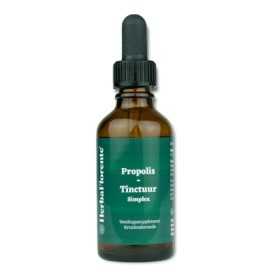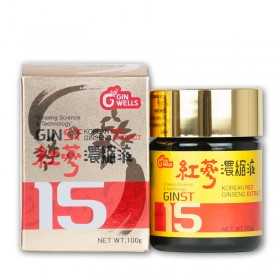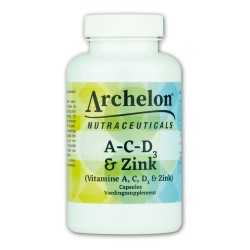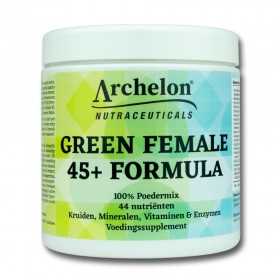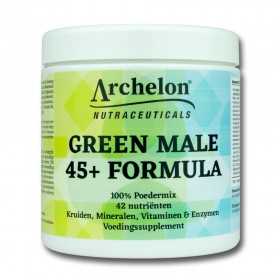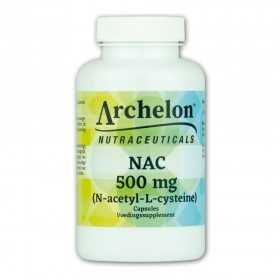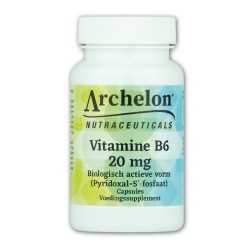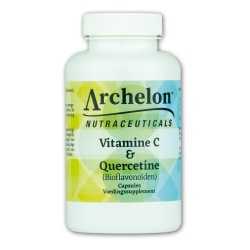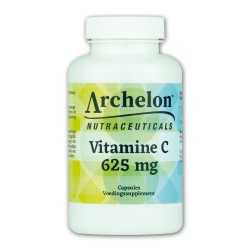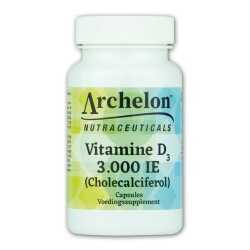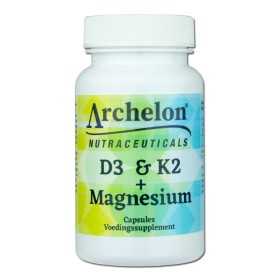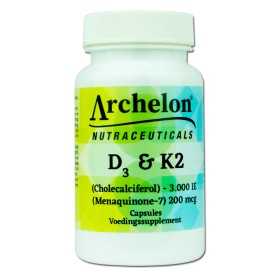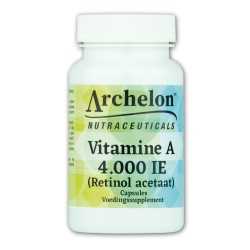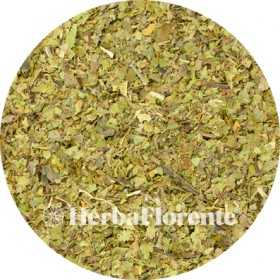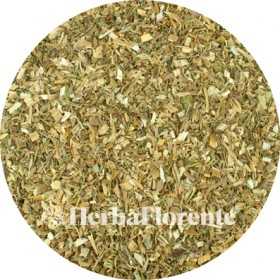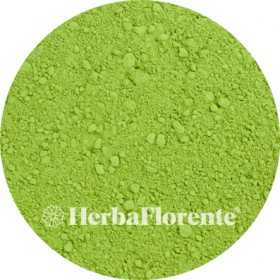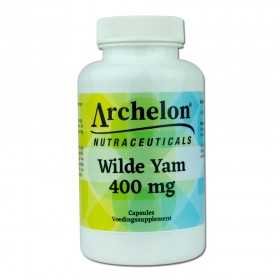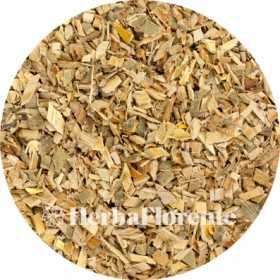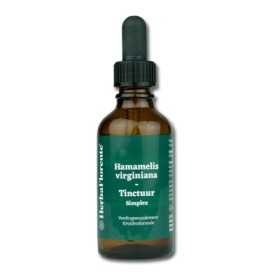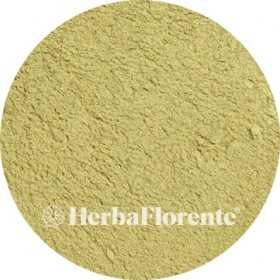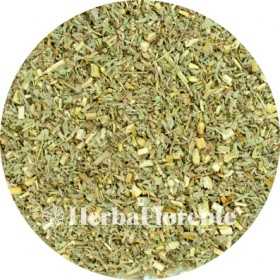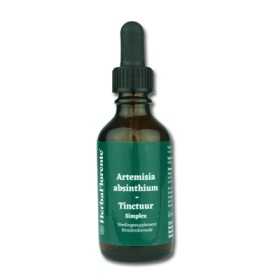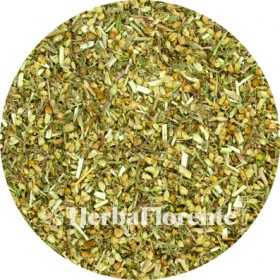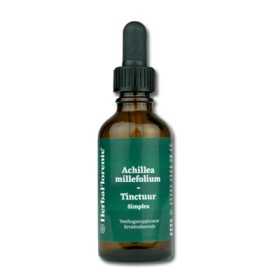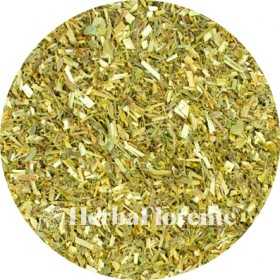Home
There are 409 products.
Vitamin B6 (P-5-F) (Biologically Active Form) - 20mg
Vitamin B6 (Pyridoxal-5'-phosphate (P-5'-P)) is the biologically active form of vitamin B6. This form is immediately available, the other form of vitamin B6 Pyridoxine-HCL must first be converted in the body. P-5'-P is involved in more than 140 enzymatic reactions in the body and is therefore an indispensable vitamin. Also, almost all metabolic reactions of amino acids require P-5'-P dependent enzymes. P-5'-P dependent enzymes also play a role in glycogen metabolism, which in turn contributes to a good energy supply. P-5'-P is also involved in the production of hemoglobin and also plays a role in the mitochondria through the involvement of the production of heme compounds.
€22.95
Vitamin C & Quercetin (Bioflavonoids)
The pure form of vitamin C is ascorbic acid. The buffered forms of ascorbic acid are generally better tolerated by humans than the pure form. Ascorbic acid is acidic and the buffered forms give virtually no gastrointestinal problems. Vitamin C is an essential vitamin for the body. It is involved in many processes in the body, including immune system, blood vessels, bones, cartilage, gums, teeth, skin, energy metabolism, nervous system and fatigue.
Quercetin is a flavonoid, also called bioflavonoid. This natural plant compound is found in various plants, fruits and vegetables. Flavonoids are responsible for the vibrant colors (pigments) in these plants and come in various shades. They play a crucial role in plant metabolism, regulate growth, provide protection against UV light, oxidation.
Quercetin is a flavonoid, also called bioflavonoid. This natural plant compound is found in various plants, fruits and vegetables. Flavonoids are responsible for the vibrant colors (pigments) in these plants and come in various shades. They play a crucial role in plant metabolism, regulate growth, provide protection against UV light, oxidation.
€29.95
Vitamin C & Rutin (Bioflavonoids)
The pure form of vitamin C is ascorbic acid. The buffered forms of ascorbic acid are generally better tolerated by humans than the pure form. Ascorbic acid is acidic and the buffered forms give virtually no gastrointestinal problems. Vitamin C is an essential vitamin for the body. It is involved in many processes in the body, including immune system, blood vessels, bones, cartilage, gums, teeth, skin, energy metabolism, nervous system and fatigue.
Rutin, also known as a flavonoid or bioflavonoid, is a naturally occurring substance in vegetables, fruits, herbs and plants. It is known for its vibrant pigmentation and can have different colors. Rutin plays several important roles in plants, such as regulating growth, protecting against UV radiation, oxidation and heat,
Rutin, also known as a flavonoid or bioflavonoid, is a naturally occurring substance in vegetables, fruits, herbs and plants. It is known for its vibrant pigmentation and can have different colors. Rutin plays several important roles in plants, such as regulating growth, protecting against UV radiation, oxidation and heat,
€29.95
Vitamin C (Sodium Ascorbic Acid) - 625 mg
The pure form of vitamin C is ascorbic acid. The buffered forms of ascorbic acid are generally better tolerated by humans than the pure form. Ascorbic acid is acidic, the fused forms give virtually no gastrointestinal problems. Vitamin C is an essential vitamin for the body. It is involved in many processes in the body, including immune system, blood vessels, bones, cartilage, gums, teeth, skin, energy metabolism, nervous system and fatigue.
€17.95
Vitamin D3 (Cholecalciferol) - 3,000 IU - 75 mcg
Vitamin D is also produced by our skin, but for many this is not sufficient or does not work well. Vitamin D supplementation is a good solution for this. Vitamin D is important in various processes in the body. Vitamin D contributes to the immune system, muscles, bones, teeth, cell division process and production of new cells.
Vitamin D is one of the fat-soluble vitamins that are crucial for our body. It is mainly found in oily fish, such as herring, salmon and mackerel, but that is only part of the story - about 10%. Meat and eggs also contribute to our vitamin D intake, albeit in smaller amounts. In addition, our body has the ability to produce vitamin D itself under the influence of sunlight, especially UV radiation.
Vitamin D is one of the fat-soluble vitamins that are crucial for our body. It is mainly found in oily fish, such as herring, salmon and mackerel, but that is only part of the story - about 10%. Meat and eggs also contribute to our vitamin D intake, albeit in smaller amounts. In addition, our body has the ability to produce vitamin D itself under the influence of sunlight, especially UV radiation.
€19.95
Vitamin D3 - 2,500 IU - 62.5 mcg & (Menaquinone-7) 25 mcg & Magnesium malate 100 mg
Vitamin D is also produced by our skin, but for many this is not sufficient or does not work well. Supplementing with vitamin D is a good solution for this. Vitamin D is important in various processes in the body.
Vitamin K2 in the form of Menaquinone-7 is the most effective form of vitamin K2. It appears to be present in the body for a very long time and can therefore be effective for a long time. Vitamin K contributes to normal blood clotting. Furthermore, vitamin K2 contributes to good bones by supporting calcium absorption.
Magnesium malate is a powerful form of magnesium that is specifically aimed at stimulating physical energy. This mineral is bound to malic acid, an essential part of our energy production.
Vitamin K2 in the form of Menaquinone-7 is the most effective form of vitamin K2. It appears to be present in the body for a very long time and can therefore be effective for a long time. Vitamin K contributes to normal blood clotting. Furthermore, vitamin K2 contributes to good bones by supporting calcium absorption.
Magnesium malate is a powerful form of magnesium that is specifically aimed at stimulating physical energy. This mineral is bound to malic acid, an essential part of our energy production.
€36.95
Vitamin D3 - 3,000 IU - 75 mcg & Vitamin K2 (Menaquinone-7) 200 mcg
Vitamin D is also produced by our skin, but for many this is not sufficient or does not work well. Vitamin D supplementation is a good solution for this. Vitamin D is important in various processes in the body. Vitamin D contributes to the immune system, muscles, bones, teeth, cell division process and production of new cells.
Vitamin K2 in the form of Menaquinone-7 is the most effective form of vitamin K2. It appears to be present in the body for a very long time and can therefore be effective for a long time. Vitamin K contributes to normal blood clotting. Furthermore, vitamin K2 contributes to good bones by supporting calcium absorption.
Vitamin K2 in the form of Menaquinone-7 is the most effective form of vitamin K2. It appears to be present in the body for a very long time and can therefore be effective for a long time. Vitamin K contributes to normal blood clotting. Furthermore, vitamin K2 contributes to good bones by supporting calcium absorption.
€32.95
Vitamine A (acétate de rétinol) - 4,000 UI - 1,200 mcg
Vitamin A is involved in various biochemical and physiological processes in the cell. For example, vitamin A binds to so-called retoinden receptors that ensure the activation or inactivation of genes that play a role in the cell specialization process. Cells acquire their specific functionality, depending on the type of tissue they are part of. Sufficient intake of vitamin A is also important for vision, but not only for the ability to adapt vision to a dark environment. Vitamin A also maintains a good structure and moisture balance of the cornea through tears. Furthermore, this vitamin is necessary for the integrity of epithelial cells in the body and thus supports the quality of the skin and mucous membranes (including in the intestine and lungs).
€15.95
Vitamine K2 (Menaquinone-7) - 200 mcg
Vitamin K2 in the form of Menaquinone-7 is the most effective form of vitamin K2. It appears to be present in the body for a very long time and can therefore work for a long time. Vitamin K contributes to normal blood clotting. Furthermore, vitamin K2 contributes to good bones by supporting calcium absorption.
€24.95
Vlezige Hokjespeul (Astragalus) - Astragalus chinensis membranus
Astragalus, also known as Fleshy Locust (Astragalus membranaceus), is a plant native to Asia. It has been used for 2000 years in traditional Chinese herbal medicine to strengthen the immune system. In addition to this property, astragalus has many other benefits. According to Chinese tradition, it strengthens the life force, or 'qi', as it is called in China, when ingested. It is known as a powerful antioxidant and is especially valued for its ability to support the immune system.
€2.90
From: €2.90
Walnut - Juglans regia
The Juglans regia, also known as walnut, walnut or walnut, belongs to the walnut family (Juglandaceae). This species is also known as common walnut or Persian walnut, to avoid confusion with the genus Juglans. Other species in the genus Juglans include the white walnut and the black walnut.
This deciduous tree can reach a height of up to 30 meters with a crown that can be more than 10 meters wide. The leaves are odd-pinnate and can be 25-40 cm long, consisting of five to nine leaflets per compound leaf. The three largest leaflets are located at the end of the leaf and measure 10-18 cm long and 6-8 cm wide. The leaflets at the base of the leaf are smaller, usually 5-8 cm long.
This deciduous tree can reach a height of up to 30 meters with a crown that can be more than 10 meters wide. The leaves are odd-pinnate and can be 25-40 cm long, consisting of five to nine leaflets per compound leaf. The three largest leaflets are located at the end of the leaf and measure 10-18 cm long and 6-8 cm wide. The leaflets at the base of the leaf are smaller, usually 5-8 cm long.
€2.00
From: €2.00
Watercress - Nasturtium officinale
The watercress (Rorippa nasturtium-aquaticum, synonym: Nasturtium officinale) is a plant from the cruciferous family (Brassicaceae). This species is very similar to the slender watercress (Rorippa microphylla), but is distinguished by shorter fruits, seeds that lie in two rows in each cell instead of one, and a seed structure with about half as many meshes.
The white watercress grows in and around water, such as along streams, ditches, ponds and in marshes. It is a limp, hairless plant that can reach a height of 10 to 60 cm. The hollow, square, fleshy stem often creeps at the base.
The white watercress grows in and around water, such as along streams, ditches, ponds and in marshes. It is a limp, hairless plant that can reach a height of 10 to 60 cm. The hollow, square, fleshy stem often creeps at the base.
€3.75
From: €3.75
Wheatgrass - Triticum aestivum
Wheatgrass is a nutritious source of vitamins A, C and E, calcium, magnesium and iron. It also contains high concentrations of chlorophyll and natural enzymes. The crop even consists of 70% chlorophyll.
€2.00
From: €2.00
Wild Yam - 400 mg
The Wild Yam (Dioscorea villosa) is a versatile plant native to Central America. The tuber/root can reach an impressive length of up to two meters. This vegetable is an important source of nutrition in South America and Africa, where it is as popular as the potato in the Netherlands. The root of the Wild Yam is rich in vitamins and minerals and is valued for its nutritious properties.
In addition to its culinary uses, Wild Yam is also used for its health supporting properties. It can provide support for menopausal symptoms such as hot flashes, night sweats and mood swings. These beneficial effects make Wild Yam a valuable plant, both in the kitchen and for health.
In addition to its culinary uses, Wild Yam is also used for its health supporting properties. It can provide support for menopausal symptoms such as hot flashes, night sweats and mood swings. These beneficial effects make Wild Yam a valuable plant, both in the kitchen and for health.
€19.95
Willow - Salicis alba
The willow (Salix alba), also known as 'white willow' in English, naturally contains the bioactive substance salicin. This tree is common in the Netherlands. In 1828, the German pharmacist Johann Andreas Buchner discovered that the bark of the willow tree contains high concentrations of the glycoside salicin. This substance is beneficial for maintaining flexible joints and muscle health.
€2.00
From: €2.00
Witch Hazel (Leaf) - Hamamelis virginiana
The American witch hazel (Hamamelis virginiana) is a shrub belonging to the family Hamamelidaceae, native to North America from Nova Scotia to Minnesota, and from southern and central Florida to eastern Texas.
The shrub can reach a height of 6 to sometimes even 10 meters, with a bushy growth thanks to the many branches that arise just above the ground. The bark is light brown, smooth but somewhat flaky, and shows a reddish-purple color on the inside.
Blooming from September through October, the flowers of the American witch hazel display clusters of 4 stamens. They usually range from pale yellow to bright yellow, although orange or red hues also occur. The petals are ribbon-shaped and measure 10-20 mm in length.
The shrub can reach a height of 6 to sometimes even 10 meters, with a bushy growth thanks to the many branches that arise just above the ground. The bark is light brown, smooth but somewhat flaky, and shows a reddish-purple color on the inside.
Blooming from September through October, the flowers of the American witch hazel display clusters of 4 stamens. They usually range from pale yellow to bright yellow, although orange or red hues also occur. The petals are ribbon-shaped and measure 10-20 mm in length.
€5.00
From: €5.00
Witch Hazel Tincture - Hamamelis virginiana Tincture
Single herbal tincture made with dried bark of Hamamelis virginiana (Witch Hazel).
The American witch hazel (Hamamelis virginiana) is a shrub belonging to the family Hamamelidaceae, native to North America from Nova Scotia to Minnesota, and from southern and central Florida to eastern Texas.
The shrub can reach a height of 6 to sometimes even 10 meters, with a bushy growth thanks to the many branches that arise just above the ground. The bark is light brown, smooth but somewhat flaky, and shows a reddish-purple color on the inside.
The American witch hazel (Hamamelis virginiana) is a shrub belonging to the family Hamamelidaceae, native to North America from Nova Scotia to Minnesota, and from southern and central Florida to eastern Texas.
The shrub can reach a height of 6 to sometimes even 10 meters, with a bushy growth thanks to the many branches that arise just above the ground. The bark is light brown, smooth but somewhat flaky, and shows a reddish-purple color on the inside.
€10.95
Woddruff Sweet - Galium aparine
Woddruff Sweet (Galium aparine) belongs to the star-leaved family (Rubiaceae). This plant is known for its ability to cling to objects it comes into contact with, thanks to the numerous hooks on both the stem and fruits. This causes plants and fruits to get caught in the fur of animals, resulting in widespread dispersal over great distances.
Cleaver leaves are widest above the middle and have one central vein. They grow together in whorls of seven. These leaves also have hooks, albeit less than the rest of the plant. The stem is thickened at the tips.
Cleaver leaves are widest above the middle and have one central vein. They grow together in whorls of seven. These leaves also have hooks, albeit less than the rest of the plant. The stem is thickened at the tips.
€2.50
From: €2.50
Wormwood Herb - Artemisia absinthium
Absinthe wormwood (Artemisia absinthium) is a plant from the composite family (Asteraceae). This species is on the Dutch Red List of plants as quite rare and moderately reduced in numbers. It is a perennial plant that grows naturally on dry, calcareous, nitrogen-rich and cultivated soils in temperate regions of Europe, Asia and North Africa. The genus name Artemisia is derived from the Greek hunting goddess Artemis.
The buds of wormwood absinthe are traditionally seen as medicinal. The bitter extract of these buds is an important ingredient in drinks such as vermouth and classic absinthe. The most important flavorings are absinthine and the menthol-smelling terpene thujone.
The buds of wormwood absinthe are traditionally seen as medicinal. The bitter extract of these buds is an important ingredient in drinks such as vermouth and classic absinthe. The most important flavorings are absinthine and the menthol-smelling terpene thujone.
€2.00
From: €2.00
Wormwood Herb - Artemisia absinthium - Cut
Absinthe wormwood (Artemisia absinthium) is a plant from the composite family (Asteraceae). This species is on the Dutch Red List of plants as quite rare and moderately reduced in numbers. It is a perennial plant that grows naturally on dry, calcareous, nitrogen-rich and cultivated soils in temperate regions of Europe, Asia and North Africa. The genus name Artemisia is derived from the Greek hunting goddess Artemis.
The buds of wormwood absinthe are traditionally seen as medicinal. The bitter extract of these buds is an important ingredient in drinks such as vermouth and classic absinthe. The most important flavorings are absinthine and the menthol-smelling terpene thujone.
The buds of wormwood absinthe are traditionally seen as medicinal. The bitter extract of these buds is an important ingredient in drinks such as vermouth and classic absinthe. The most important flavorings are absinthine and the menthol-smelling terpene thujone.
€2.00
From: €2.00
Wormwood Tincture - Artemisia absinthium Tincture
Single herbal tincture made with dried herb of Artemisia absinthium (Wormwood).
Wormwood (Artemisia absinthium) is a plant in the Asteraceae family. This species is listed on the Dutch Red List of Plants as relatively rare and moderately declining. It is a perennial plant that grows naturally in dry, calcareous, nitrogen-rich, and cultivated soils in temperate regions of Europe, Asia, and North Africa. The genus name Artemisia is derived from the Greek goddess of hunting, Artemis.
Wormwood (Artemisia absinthium) is a plant in the Asteraceae family. This species is listed on the Dutch Red List of Plants as relatively rare and moderately declining. It is a perennial plant that grows naturally in dry, calcareous, nitrogen-rich, and cultivated soils in temperate regions of Europe, Asia, and North Africa. The genus name Artemisia is derived from the Greek goddess of hunting, Artemis.
€10.95
Yarrow - Achillea millefolii
Yarrow (Achillea millefolium) is an herb that belongs to the daisy family (Asteraceae). It is a winter-hardy, perennial plant that is common in the Netherlands. It has finely divided, feathery leaves and small white flowers that tend toward pink. The use of this herb has been around for centuries. Yarrow is used, among other things, to support digestion and promote fat metabolism. The herb is beneficial for the blood vessels, urinary tract and respiratory tract. It helps with normal menstruation.
€2.00
From: €2.00
Yarrow Tincture - Achillea millefolium Tincture
Single herbal tincture made with dried herb of Achillea millefolium (Yarrow).
Yarrow (Achillea millefolium) is an herb that belongs to the daisy family (Asteraceae). It is a winter-hardy, perennial plant that is common in the Netherlands. It has finely divided, feathery leaves and small white flowers that tend toward pink. The use of this herb has been around for centuries. Yarrow is used, among other things, to support digestion and promote fat metabolism. The herb is beneficial for the blood vessels, urinary tract and respiratory tract. It helps with normal menstruation.
Yarrow (Achillea millefolium) is an herb that belongs to the daisy family (Asteraceae). It is a winter-hardy, perennial plant that is common in the Netherlands. It has finely divided, feathery leaves and small white flowers that tend toward pink. The use of this herb has been around for centuries. Yarrow is used, among other things, to support digestion and promote fat metabolism. The herb is beneficial for the blood vessels, urinary tract and respiratory tract. It helps with normal menstruation.
€11.95
Yellow Sweet Slover - Melilotus officinalis
The Yellow Sweet Slover (Melilotus officinalis) is a biennial or perennial plant from the legume family (Leguminosae). Originally from Southern Europe, this plant has now spread worldwide. It is a slender, hairless plant that is frequently found along roads and on arable land, and is also found in dune areas. The lemon yellow honey clover reaches a height of 30 to 150 cm and blooms from July to October.
€2.00
From: €2.00

